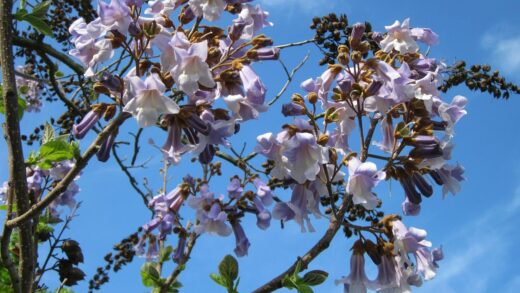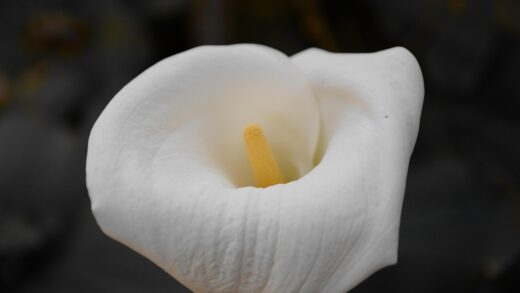The overwintering of lavender is crucial for ensuring the plant’s longevity and abundant blooming in the following year. Although lavender is a plant that thrives in a Mediterranean climate, many of its varieties, especially common lavender, Lavandula angustifolia, are surprisingly cold-hardy. However, proper winter preparation is essential even for the hardiest plants, especially in frosty, windy areas. The winter hardiness largely depends on the plant’s age, health, and growing conditions, so great emphasis should be placed on considering individual needs. Careful preparation not only serves to protect against frost but also helps prevent other stressors that occur during the winter months, such as root rot caused by excessive moisture or dehydration.
Preparation during the autumn period
Autumn preparation begins in late summer. This is the time to perform the last, more thorough pruning, which helps maintain the plant’s shape and promotes dense, compact growth. However, it is important not to cut it back too severely, as the fresh shoots will not have time to mature before winter sets in, making them vulnerable to frost. During pruning, always remove damaged, diseased, or dead parts so that the plant can focus its energy on strengthening the healthy shoots. This step also improves air circulation within the bush, thereby reducing the risk of fungal diseases.
Nutrient replenishment is also essential in the autumn period, but it requires a different approach than in the spring or summer. At this time, the use of high-nitrogen fertilizers should be avoided, as they stimulate green growth, which can be fatal during frosts. Instead, it is advisable to use fertilizers with higher potassium and phosphorus content, which help strengthen the root system and thicken cell walls. This type of nutrient replenishment increases the plant’s frost resistance and resilience. Let’s not forget that lavender does not like acidic soil, so it is also worth checking the soil’s pH and correcting it with liming if necessary.
The amount of watering should also be reduced as autumn sets in. Lavender does not like stagnant water, especially in the cooler months when the rate of evaporation is also lower. Excessive moisture can easily cause the roots to rot, leading to the plant’s complete destruction. It is important to let the soil dry out completely between waterings and only give it water when it truly needs it. Autumn rains are often sufficient for the plant to get enough moisture, so it’s worth keeping an eye on the weather.
Soil preparation is also crucial. Lavender prefers well-drained, loose soil. If our soil is clayey and compacted, it is worth improving its structure by adding sand, gravel, or perlite. This step is especially important before winter, as moisture in frozen soil can cause the most damage. A layer of mulch or gravel placed around the root zone can also help keep the soil warm and improve drainage.
More articles on this topic
Winter protection against frost
Protection against frost is one of the most important aspects of overwintering lavender, especially in areas with a continental climate. Although Lavandula angustifolia is relatively frost-hardy, prolonged, extreme cold can damage the root system and shoots. The simplest and most effective solution for protecting the roots is to cover the soil. For this, we can use organic mulch, such as pine shavings, leaves, or straw, but we must make sure that the layer is not too thick and does not completely cover the plant to ensure air circulation.
It is also worth protecting the lavender’s shoots, especially in younger plants. Burlap sacks, fleece fabric, or other breathable materials are excellent for this purpose. These coverings not only provide protection against the cold but also shield the plant from dehydration caused by winter sunlight. It is important that the covering is not airtight, so that the plant does not become stuffy and fungal infections can be avoided. In older, well-established bushes, the dry stems left after pruning can also provide sufficient protection against the cold.
Wind can also cause significant damage during the winter. Cold, dry wind dehydrates the plant, which is particularly dangerous in frozen soil, as the plant is unable to absorb water. To protect against the wind, it is advisable to plant lavender in a sheltered location, such as next to a wall or among other plants. If this is not possible, creating a temporary windbreak, such as a fence or reed screen, can also help.
Before the onset of frosts, it is also worth checking the moisture content of the root zone. If autumn was dry, it is worth performing one last, thorough watering before the frosts. This step is important because moist soil freezes more slowly than dry soil, so the roots will be better protected. However, make sure that the soil has time to absorb the water and that it does not stand on the surface. For containerized lavender, wrapping the pot can also provide effective protection.
More articles on this topic
Winter care for potted lavender
Overwintering potted lavender requires more attention than its in-ground counterparts. The roots in the pot are much more exposed to frost, as the soil mass is smaller and cools down faster. The best solution is to overwinter the plant in a frost-free but cool room, such as a garage, cellar, or unheated stairwell. The ideal temperature should be between 0 and 10 °C, which allows the plant to rest for the winter but prevents frost damage.
In a frost-free room, the plant must be provided with appropriate light conditions. Although lavender is dormant in winter, minimal light exposure is essential. Weak, diffused light is most suitable, and direct, strong sunlight should be avoided so that the plant does not start to sprout prematurely. If the available room is dark, it is worth moving the plant to a brighter but still cool place every few weeks so that it does not suffer from a lack of light.
The amount of watering must be drastically reduced during overwintering. Lavender consumes very little water in winter, so overwatering is the most common mistake. The soil in the pot can completely dry out between waterings, sometimes for weeks. It is advisable to water the plant only once a month, or with a small amount of water if the soil is completely dry. Excessive moisture causes root rot, which can lead to the plant’s death. It is important that the drainage hole at the bottom of the pot remains open and that water does not collect in the saucer.
If we don’t have the option to overwinter potted lavender in a frost-free place, we must focus on outdoor protection. Place the pot in a sheltered location, such as next to a wall, and raise it off the ground so that the bottom of the pot does not come into contact with the cold soil. Wrap the pot in burlap, bubble wrap, or other insulating material to protect it against frost. It is also worth protecting the plant’s shoots with a covering to prevent dehydration and wind damage.
Awakening after winter
After winter has passed, with the first spring sun rays, the lavender also begins to awaken. It is important not to rush the removal of the winter coverings. Wait for the spring frosts to pass and only remove the protective layers when no sudden cold is expected. A gradual removal of the covering can also be a good solution, so that the plant can slowly get used to the outdoor temperature and direct sunlight. This step helps to avoid the shock that a too-rapid change in environment can cause.
The first sign of spring awakening is the appearance of fresh shoots. This is the time to perform the first pruning, which consists of removing dead and damaged parts. This pruning stimulates the formation of new shoots and helps maintain the compact shape of the bush. It is important not to cut the plant back to the woody parts, as this will significantly slow down growth and flowering. Proper pruning is essential for maintaining the long-term health of the lavender.
The first watering after winter is also crucial. Lavender has received very little water during the winter, so the roots need moisture to start spring growth. However, the principle of gradualness also applies here. Start watering with a small amount of water and only add more when the soil is completely dry. We can also begin nutrient replenishment, but instead of high-nitrogen fertilizers, it is worth giving the plant a complex, balanced nutrient to begin with.
In the case of potted lavender, post-winter preparation continues with moving them outdoors. The plant should be slowly accustomed to outdoor conditions. First, take it outside for only a few hours in a shady spot, and then gradually increase the time spent outdoors and the amount of sunlight. This “hardening” helps the plant prepare for summer sunlight and temperature fluctuations. If the soil in the pot is depleted, it is worth repotting the plant into fresh, well-drained soil


















